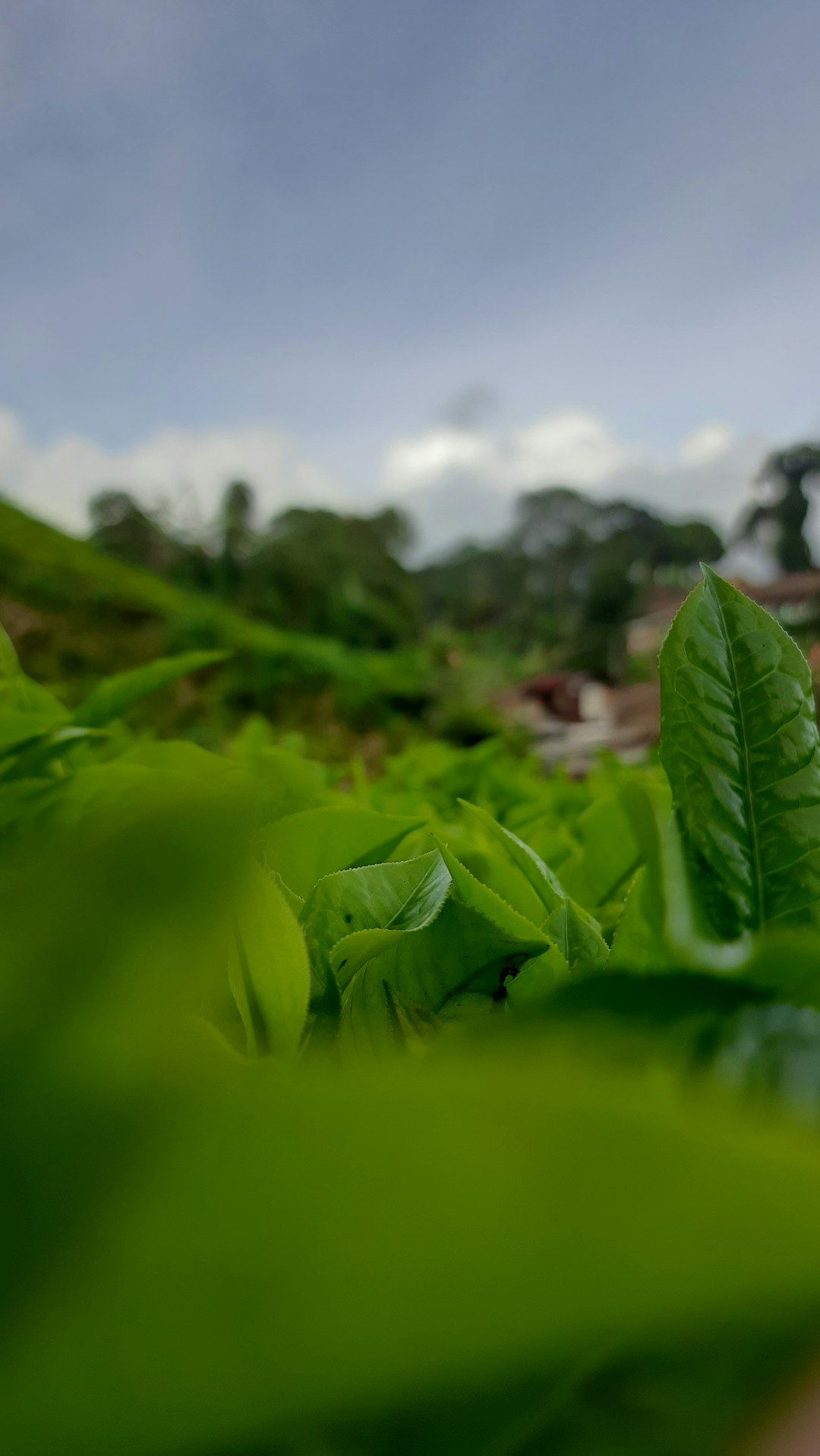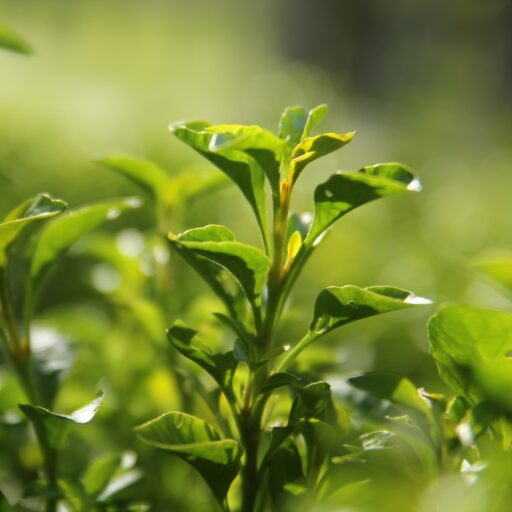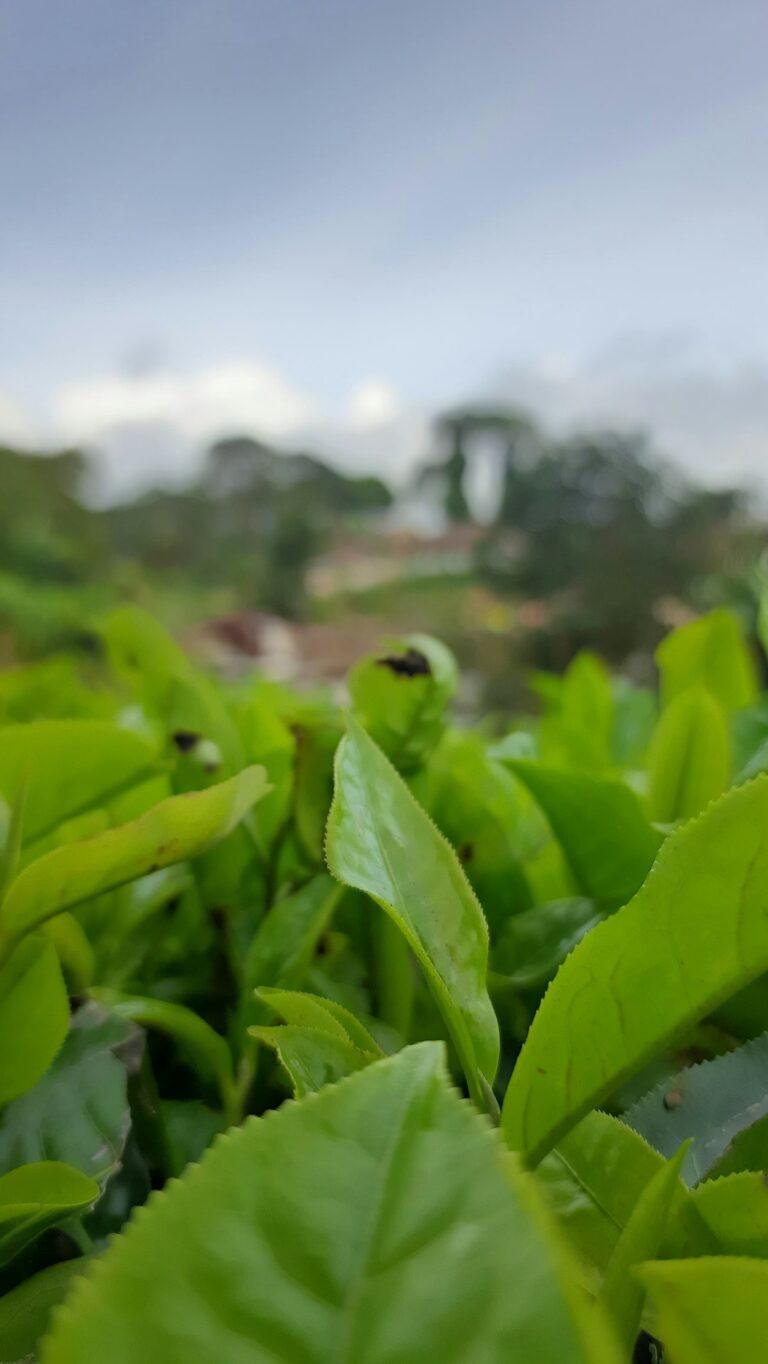Support our educational content for free when you purchase through links on our site. Learn more
How to Care for a Tea Plant: 12 Essential Tips for Thriving Growth 🌱
Are you ready to embark on a delightful journey of growing your own tea plant? Imagine plucking fresh leaves from your garden and brewing a cup of aromatic tea that you cultivated yourself! In this comprehensive guide, we’ll dive deep into the 12 essential tips for caring for your tea plant, ensuring it thrives and flourishes in your home or garden. Did you know that tea is one of the most consumed beverages worldwide, second only to water? With the right care, you can join the ranks of tea enthusiasts who enjoy the freshest brews right from their own backyard!
From understanding the different types of tea plants to mastering the art of pruning and propagation, we’ve got you covered. Whether you’re a seasoned gardener or a curious beginner, our expert insights and practical tips will help you nurture your Camellia sinensis like a pro. So, grab your gardening gloves, and let’s get started on this exciting adventure!
Key Takeaways
- Soil Matters: Tea plants thrive in acidic, well-draining soil with a pH between 4.0 and 5.5.
- Light & Water: They prefer full sun to partial shade and should be watered when the top inch of soil is dry.
- Pruning & Propagation: Regular pruning encourages growth, and you can easily propagate from cuttings or seeds.
- Pest Management: Keep an eye out for pests like aphids and treat them promptly with organic solutions.
Ready to start your tea-growing journey? 👉 Shop tea plant care products on:
- Amazon: Tea Plant Care Products
- Walmart: Tea Plant Care Supplies
Dive into the full article for all the tips and tricks you need to cultivate your very own tea plant! 🍵✨
Table of Contents
Quick Tips and Facts
The Fascinating History of Tea Plants
Understanding the Different Types of Tea Plants
Essential Care for Your Tea Plant
Pruning Techniques for a Thriving Tea Plant
Mastering the Art of Propagating Camellia Sinensis
Potting and Repotting: When and How to Do It
Overwintering Your Tea Plant: Tips for Cold Weather
Identifying and Managing Common Pests and Diseases
Encouraging Your Tea Plant to Bloom
Expert Tips for Growing Tea in Containers
The Benefits of Organic Tea Plant Care
Harvesting and Processing Your Own Tea
More from The Spruce: Additional Resources
Conclusion
Recommended Links
FAQ
Reference Links
Quick Tips and Facts
If you’re interested in growing your own tea plants at home, check out our related article on tea plants to grow at home. Here are some quick tips and facts to get you started:
- Tea Plant Care: Tea plants prefer acidic soil with a pH between 4.0 and 5.5, and well-draining soil to prevent root rot.
- Lighting: Tea plants thrive in full sun to partial shade, but avoid fully shaded areas to prevent reduced vigor.
- Watering: Keep the soil evenly and moderately moist, but avoid overwatering, which can lead to root rot.
- Temperature: Tea plants prefer temperatures between 70°F and 85°F during the growing season, and around 50°F during dormancy.
- Fertilization: Use organic or standard NPK formulas for ornamental plants, and apply compost annually in autumn or early spring.
For more information on tea plant care, visit the Green Tea Cultivation section on our website.
The Fascinating History of Tea Plants

Tea plants have a rich history that dates back thousands of years. According to Wikipedia, tea plants are native to Asia and were first cultivated in China over 4,000 years ago. Today, tea is one of the most widely consumed beverages in the world, with a wide range of flavors and varieties to choose from. Check out our article on Health Benefits of Tea to learn more about the benefits of drinking tea.
Introduction to Tea Plants
Tea plants are a type of evergreen shrub that belongs to the Camellia genus. They are relatively small, typically growing to be around 6-15 feet tall, and have dark green leaves that are elliptical in shape. Tea plants are also known for their small, white flowers that bloom in the fall and have a sweet, fragrant scent.
Understanding the Different Types of Tea Plants
There are several different types of tea plants, including:
- Camellia sinensis sinensis: This is the most common type of tea plant and is native to China.
- Camellia sinensis assamica: This type of tea plant is native to India and is known for its larger leaves and more robust flavor.
- Camellia sinensis ‘Rosea’: This is a cultivar of tea plant that is known for its pink flowers and is often used as an ornamental plant.
For more information on the different types of tea plants, visit the Herbal Tea Planting section on our website.
Essential Care for Your Tea Plant
To keep your tea plant happy and healthy, make sure to provide it with the right amount of light, water, and fertilization. Here are some essential care tips:
- Lighting: Tea plants prefer full sun to partial shade, but avoid fully shaded areas to prevent reduced vigor.
- Watering: Keep the soil evenly and moderately moist, but avoid overwatering, which can lead to root rot.
- Fertilization: Use organic or standard NPK formulas for ornamental plants, and apply compost annually in autumn or early spring.
Check out our article on Soil and Climate for Tea to learn more about the best soil and climate conditions for tea plants.
Pruning and Training
Pruning and training are important parts of tea plant care. Here are some tips:
- Prune regularly: Prune your tea plant regularly to encourage new growth and prevent the plant from becoming leggy.
- Train the plant: Train your tea plant to grow in a bushy shape by pruning the tips of the branches and encouraging lateral growth.
For more information on pruning and training, visit the DIY Tea Blending section on our website.
Pruning Techniques for a Thriving Tea Plant
Pruning is an essential part of tea plant care, and can help to encourage new growth and prevent the plant from becoming leggy. Here are some pruning techniques to try:
- Tip pruning: Prune the tips of the branches to encourage lateral growth and prevent the plant from becoming leggy.
- Thinning: Thin out the branches to allow more light to reach the inner parts of the plant and encourage healthy growth.
Check out our article on Green Tea Cultivation to learn more about pruning techniques for tea plants.
Mastering the Art of Propagating Camellia Sinensis
Propagating Camellia sinensis can be a fun and rewarding experience. Here are some tips to get you started:
- Take cuttings: Take 6-8 inch softwood stem cuttings with a sharp pruner, and remove lower leaves to prevent them from coming into contact with the soil.
- Plant the cuttings: Plant the cuttings in a potting medium mixed with sand, perlite, or vermiculite, and water them by misting or bottom watering.
- Provide humidity: Cover the seedling trays with plastic domes or plastic bags to provide humidity and promote root growth.
For more information on propagating Camellia sinensis, visit the Herbal Tea Planting section on our website.
Potting and Repotting: When and How to Do It
Potting and repotting are important parts of tea plant care. Here are some tips:
- Choose the right pot: Choose a plastic or glazed ceramic pot with drainage holes to prevent root rot.
- Use the right soil: Use a quality potting soil mixed with aged compost to provide nutrients and promote healthy growth.
- Repot regularly: Repot your tea plant every three to four years to provide fresh soil and a larger pot if necessary.
Check out our article on Soil and Climate for Tea to learn more about the best soil and climate conditions for tea plants.
Overwintering Your Tea Plant: Tips for Cold Weather
Overwintering your tea plant can be a challenge, especially in cold climates. Here are some tips to help you keep your tea plant happy and healthy during the winter months:
- Bring it indoors: Bring your tea plant indoors to protect it from frost and freezing temperatures.
- Provide humidity: Provide humidity by covering the plant with a plastic bag or cloche to prevent dryness and promote healthy growth.
- Reduce watering: Reduce watering to prevent root rot, and stop fertilizing until the spring.
For more information on overwintering, visit the Green Tea Cultivation section on our website.
Identifying and Managing Common Pests and Diseases
Tea plants can be susceptible to pests and diseases, especially when they are not properly cared for. Here are some common pests and diseases to watch out for:
- Aphids: Check for aphids on the undersides of leaves and treat with neem oil or horticultural oil if necessary.
- Root rot: Check for root rot by looking for soft, mushy roots and treat by repotting the plant in fresh soil.
Check out our article on Health Benefits of Tea to learn more about the benefits of drinking tea and how to keep your tea plant healthy.
Encouraging Your Tea Plant to Bloom
Encouraging your tea plant to bloom can be a fun and rewarding experience. Here are some tips to try:
- Provide the right conditions: Provide the right conditions for blooming, including cool temperatures and shorter days.
- Fertilize: Fertilize your tea plant with a balanced NPK formula to promote healthy growth and blooming.
- Prune: Prune your tea plant regularly to encourage new growth and promote blooming.
For more information on encouraging your tea plant to bloom, visit the DIY Tea Blending section on our website.
Expert Tips for Growing Tea in Containers
Growing tea in containers can be a great way to enjoy the benefits of tea plants, even if you don’t have a lot of space. Here are some expert tips to try:
- Choose the right container: Choose a plastic or glazed ceramic pot with drainage holes to prevent root rot.
- Use the right soil: Use a quality potting soil mixed with aged compost to provide nutrients and promote healthy growth.
- Provide the right conditions: Provide the right conditions for growth, including full sun to partial shade and moderate watering.
Check out our article on Soil and Climate for Tea to learn more about the best soil and climate conditions for tea plants.
The Benefits of Organic Tea Plant Care
Organic tea plant care can be a great way to promote healthy growth and reduce the risk of pests and diseases. Here are some benefits of organic tea plant care:
- Improved soil health: Organic tea plant care can help to improve soil health by adding organic matter and promoting beneficial microorganisms.
- Reduced risk of pests and diseases: Organic tea plant care can help to reduce the risk of pests and diseases by promoting healthy growth and strong immune systems.
- Better flavor and aroma: Organic tea plant care can help to promote better flavor and aroma by reducing the use of chemical fertilizers and pesticides.
For more information on organic tea plant care, visit the Green Tea Cultivation section on our website.
Harvesting and Processing Your Own Tea
Harvesting and processing your own tea can be a fun and rewarding experience. Here are some tips to try:
- Harvest at the right time: Harvest your tea leaves at the right time, when they are young and tender.
- Process with care: Process your tea leaves with care, using traditional methods such as withering, rolling, and oxidation.
- Enjoy your homemade tea: Enjoy your homemade tea, and experiment with different flavors and blends to find your favorite.
Check out our article on DIY Tea Blending to learn more about harvesting and processing your own tea.
More from The Spruce: Additional Resources
For more information on tea plant care and cultivation, check out these additional resources from The Spruce:
- Tea Plant Care: Learn more about tea plant care, including lighting, watering, and fertilization.
- Tea Plant Propagation: Learn more about propagating tea plants, including taking cuttings and planting seeds.
- Tea Plant Pruning: Learn more about pruning tea plants, including tip pruning and thinning.
For more information on tea plants and cultivation, visit the Herbal Tea Planting section on our website.
Conclusion

Growing your own tea plant can be a delightful and rewarding experience! With the right care, you can enjoy fresh tea leaves right from your garden or balcony. We’ve explored everything from essential care tips to propagation techniques, and we hope you feel equipped to nurture your own Camellia sinensis.
Summary of Positives and Negatives
Positives:
- Freshness: Homegrown tea offers unparalleled freshness and flavor.
- Health Benefits: Growing your own tea means you can control the cultivation process, ensuring no harmful chemicals are used.
- Satisfaction: The joy of brewing tea from your own plants is unmatched!
Negatives:
- Time-Consuming: Growing tea plants requires patience and consistent care.
- Space Requirements: Tea plants need adequate sunlight and space to thrive, which might be a challenge for some urban gardeners.
Overall, we confidently recommend starting your tea-growing journey! With a little love and attention, you’ll be sipping your own brew in no time. 🌱🍵
Recommended Links
-
👉 Shop Tea Plant Care Products on:
- Amazon: Tea Plant Care Products
- Walmart: Tea Plant Care Supplies
- Etsy: Tea Plant Seeds
-
Books on Tea Cultivation:
FAQ

What type of soil is best for growing a tea plant at home?
The Ideal Soil for Tea Plants
Tea plants thrive in acidic soils with a pH level between 4.0 and 5.5. A well-draining mix that includes organic matter like compost, peat moss, or aged bark is ideal. This helps retain moisture while preventing root rot. If you’re unsure about your soil’s acidity, you can easily test it with a pH meter or soil test kit.
How often should I water my tea plant to ensure optimal health and growth?
Watering Guidelines for Tea Plants
Tea plants prefer evenly moist soil. During the growing season, you should water them when the top inch of soil feels dry. This could mean watering every few days in hot weather, but be cautious not to overwater, as this can lead to root rot. In winter, reduce watering frequency as the plant enters dormancy.
What are the ideal lighting conditions for a tea plant, and can it thrive in indoor environments?
Light Requirements for Tea Plants
Tea plants love bright, indirect sunlight. Ideally, they should receive 6 hours of direct sunlight daily. If you’re growing indoors, place them near a south-facing window. However, be mindful of extreme heat; if temperatures soar, provide some afternoon shade. Tea plants can thrive indoors, but they may not bloom as readily as those grown outdoors.
Can I propagate a new tea plant from cuttings or seeds, and what are the best methods for doing so?
Propagation Techniques for Tea Plants
Yes, you can propagate tea plants from cuttings or seeds. For cuttings, take 6-8 inch softwood cuttings and plant them in a mix of potting soil and perlite. Keep the soil moist and cover the pot with a plastic bag to maintain humidity. For seeds, soak them in water for 24 hours before planting in a well-draining mix. Germination can take several weeks, so be patient!
What pests should I watch out for when growing tea plants?
Common Pests and How to Manage Them
Tea plants can attract pests like aphids, spider mites, and scale insects. Regularly inspect your plants and treat any infestations with neem oil or insecticidal soap. Maintaining good air circulation and avoiding overcrowding can also help prevent pest issues.
Read more about “Discover the Secrets of Growing Tea Leaves Indoors: 10 Essential Tips for 2025! 🍃”
How can I encourage my tea plant to bloom?
Blooming Tips for Tea Plants
To encourage blooming, ensure your tea plant experiences a cool dormancy period in winter. Prune after blooming to promote new growth and fertilize with a phosphorus-rich fertilizer during the growing season. Proper care during the blooming phase can lead to beautiful flowers in the fall or winter.
Reference Links
- Wikipedia: Camellia sinensis
- The Spruce: Camellia sinensis Tea Plant Care Guide
- Mint Island Tea: Tea Plants
- Greg App: Tea Plant Care: Water, Light, Nutrients
For more in-depth information on tea plant care, check out the resources linked above! Happy gardening! 🌿✨




